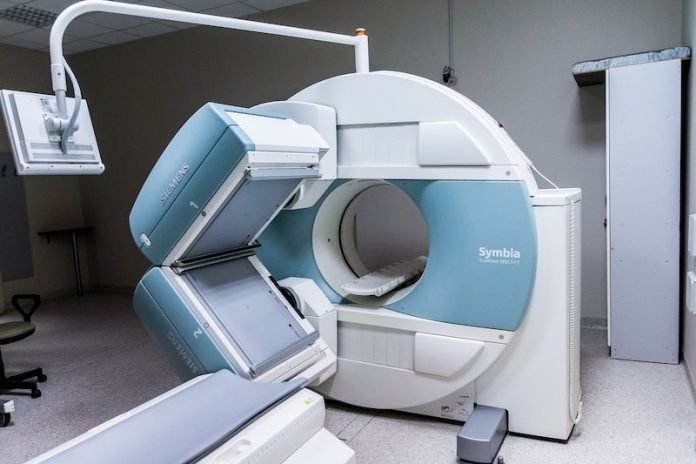
In a new study, researchers report a novel MRI-guided procedure that uses ultrasound effectively treats prostate cancer with minimal side effects.
The incision-free technique could also be used to treat benign enlargement of the prostate gland.
Prostate cancer is the second-leading cause of cancer death in men after lung cancer. Treating disease in the small gland that surrounds the urethra just outside the bladder is challenging.
Surgery and radiation are not always effective and can result in incontinence, impotence and bowel dysfunction.
Other currently available techniques lack sophisticated imaging guidance and temperature monitoring.
In recent years, a minimally invasive method called MRI-guided transurethral ultrasound ablation (TULSA) has emerged as a promising treatment option.
TULSA works by delivering precise doses of sound waves to diseased prostate tissue while sparing the healthy nerve tissue surrounding the prostate.
TULSA relies on a rod-shaped device that is inserted into the urethra. The novel device has 10 ultrasound-generating elements that can cover the entire prostate gland.
One or more of the elements are used to send out sound waves that heat and destroy the target prostate tissue.
The elements are controlled automatically by a software algorithm that can adjust the shape, direction, and strength of the therapeutic ultrasound beam.
The entire procedure takes place in an MRI scanner so that doctors can closely monitor treatment and assess the degree and location of heating.
In the study, the researchers examined 115 men with localized low or intermediate risk, gland-confined prostate cancer.
Clinicians delivered TULSA treatment to the entire gland. Treatment time averaged 51 minutes.
Prostate volume in the study group decreased on average from 39 cubic centimeters pre-treatment to 3.8 cubic centimeters a year after treatment.
Overall, cancer was eliminated in 80% of the study participants. Seventy-two out of 111 men, or 65%, had no evidence of any cancer at biopsy after one year.
Blood levels of prostate-specific antigen (PSA), a marker of prostate cancer, fell by about 95%. There were low rates of severe toxicity and no bowel complications.
The team says they saw very good results in the patients, with a dramatic reduction of over 90 percent in prostate volume and low rates of impotence with almost no incontinence.
Approved for clinical use in Europe, TULSA has just received FDA 510(k) clearance for prostate tissue ablation in the United States.
The technique could develop into an important tool for treating both prostate cancer and benign prostatic hyperplasia, or enlargement of the prostate.
One author of the study is Steven S. Raman, M.D., a professor of radiology and urology.
The study was presented at the annual meeting of the Radiological Society of North America (RSNA).
Copyright © 2019 Knowridge Science Report. All rights reserved.



